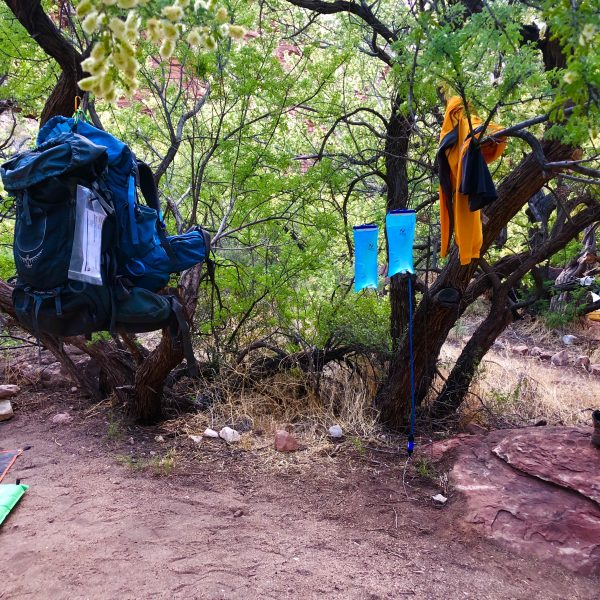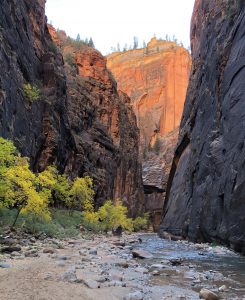
Backpacking in national parks and other federal lands we get a sense of their grandeur. They are treasures to be explored and cherished. On foot, we get to see and experience them up close and personal.
Chris & Mac
We outventure to help you outventure!
Support Grey Otter Outventures!
Please help us continue to bring you great content:
Backpacking in national parks and other federal lands we get a sense of their grandeur. They are treasures we cherish. On foot, we get to see and experience them up close and personal.
BACKPACKING: WHY IN NATIONAL PARKS AND OTHER FEDERAL LANDS?
Federal agencies and land managers encourage backpacking on federally protected lands. We know this because thousands of miles of trail and hundreds of backcountry campsites are available for this purpose. Even so, backpacking almost always requires permits, and established campground sites typically need reservations. Additionally, for protection of backpacker and wildlife, food storage restrictions are more the rule than the exception.
BACKPACKING IN NATIONAL PARKS
National parks are well suited for backpacking. Not only that, they are extremely popular. We know this because competition for permits is so fierce that some parks have enacted lottery systems for backpacking permit applications. While maximum flexibility on dates and routes provides greatest chances of success in obtaining these permits, there are no guarantees. If unable to obtain an advance permit don’t give up hope. It is often possible to obtain walk up permits. This is because some parks hold back a percentage of their permits for walk up’s, and all get openings due to cancellations. You might get lucky.
Success in gaining the necessary permits for backpacking means leaving the crowds behind. Right? Unfortunately, popular backpacking campsites in national parks are often full (especially at peak times), and they are first come, first serve. As a result, late arrivals each day get the least desirable sites. If you are able, an early arrival gets the best picks.
BACKPACKING IN NATIONAL MONUMENTS
Numerous national monuments are also well suited for backpacking. Though many national monuments have an abundance of maintained trails, roads to the trailheads may be rugged, and parking is generally limited. As such, trails and campsites have fewer users at any one time and are normally less crowded than national parks. Rules and restrictions regarding trail use may differ depending on the location of the monument. Extremely popular or sensitive areas may require a permit and/or a camping reservation.
BACKPACKING IN NATIONAL FORESTS
National forests offer further opportunity for backpackers seeking solitude. Set aside for timber, water, wildlife, grazing, and outdoor recreation, national forest lands are minimally managed or maintained. All backcountry camping is dispersed (no maintained sites) and free. Do not expect to find services of any kind at or near trailheads, though the forest service does provide many small, first come first serve, free to use campsites which are vehicle accessible. Getting to the trailhead is often on rugged roads. Extremely popular or sensitive areas may require a permit to access.
BACKPACKING IN NATIONAL FORESTS
Wilderness areas are special areas set aside within national forests. They are strictly for recreation that does not involve any sort of mechanization. As such, they provide maximum peace and quiet for your backcountry backpacking experience. Dispersed camping is free and is allowed. Extremely popular or sensitive areas may require a permit.
BACKPACKING IN OTHER FEDERAL LANDS
Lastly, the Bureau of Land Management (BLM) manages additional public lands where backcountry camping is dispersed and free. Like in national forests, backpackers seeking solitude can find it on BLM lands. Extremely popular or sensitive areas may require a permit.
BACKPACKING: WHERE & HOW ON FEDERAL LANDS
The United States has 61 national parks and 129 national monument sites. National forest and wilderness areas protect another 154 forest and 20 grassland sites. In addition to these, the Bureau of Land Management manages another 254 million acres of land. Happily, many of these lands are both accessible to and appropriate for backpacking.
Access and use of national lands comes with a fee (for most). Purchase a National Park Pass (known as the America the Beautiful Pass) to save money and time. Many parks charge $35 or more per day to visit, whereas the cost of an annual America The Beautiful pass is $80. For seniors the cost is $20. A lifetime pass for seniors is $80. The pass pays for itself in no time. Please note that fees quoted herein are always subject to change. Where permits are required they are often free.
Find National Parks of the United States here.
National Monuments of the United States are listed here.
Locate National Forest areas for Backpacking here.
Find BLM Lands for Backpacking here.



SAFETY DISCLAIMER: The activities discussed in this website are outdoor activities and, as such, have inherent risks to which participants are exposed. It is not the intent of this website, nor is it possible due to the variability of weather, terrain, equipment, and experience, to detail all of those risks. The information contained in this site is informational, but not instructive nor exhaustive. It is the sole responsibility of the user to ensure he/she is in good health, fully prepared, and fully informed as to dangers before undertaking any of the activities discussed in this website and the user does so at his/her own risk. The user understands that by using this website he/she acknowledges and accepts all risks associated with use of information from this website and participation in any particular activity addressed herein. Please see “Terms of Use” for additional information.
Want to share this article with your friends? Click on the share button below:
Want more?
Get the latest outventure updates by following us on social media . . .



